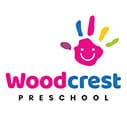Social and Emotional Learning Curriculum for Preschool
At Woodcrest we use an Award-Winning Social and Emotional Curriculum by Dr. Becky Bailey called, “Conscious Discipline”
It is an award-winning social and emotional learning curriculum used by more than 10,000 schools in the United States
Conscious Discipline creates a compassionate culture and facilitates an intentional shift in adults’ understanding of behavior. It then provides specific brain-friendly, research-backed strategies for responding to each child’s individual needs with wisdom. This highly effective approach is proven to increase self-regulation, sense of safety, connection, empathy and intrinsic motivation in both children and adults. The greatest benefit of Conscious Discipline is shifting behavior from a child doing something wrong or naughty to everything is a learning opportunity and spending the time to learn what does a child need right now to regulate emotions.
First Impressions with Greetings:
Greetings provide a way to connect with every family that enters the classroom. In an infant/toddler classroom, the greeting is as helpful for the parent/guardian as it is for the child! All parents/guardians want to know their children are going to be safe and valued, and have a fun day of learning while at school. You can assist in this felt sense of safety and security for both parents/guardians and children by taking a moment to authentically connect during drop off. For the children, this felt sense of safety and connection is essential to a day of cooperation, caring, learning and fun!
Ways to be Helpful
The first step in helping children be successful is for adults to focus on the behaviors we want to see, and then convey that information to children clearly (with visual aids whenever possible). The more clearly we state the expectation, the more likely children are to fulfill it! Remind yourself to focus on the behaviors you want to see more of, and help children see exactly how to be successful by creating a Ways To Be Helpful Board.
School Family
The Friends and Family Board builds community and connection, and links the home family with the School Family. In early childhood centers, it also provides a valuable way for young children to feel the presence of family members they may be missing during the school day.
Wishing You Well:
Wishing well offers a way for children to support each other and calm themselves. The Wish Well Board provides a visual way to aid children in wishing each other well during your daily Wish Well Ritual.
Wishing well is a way to instantly calm ourselves, and offer love and caring to others. It lays the foundation for empathy, an essential social skill. Wishing well provides a way for children to help others when there is no physically tangible way to offer help. To wish well
- put your hands over your heart
- take a deep breath in
- pause and picture something precious in your mind
- breathe out while opening your arms and sending those precious, loving thoughts out to the person you are wishing well.
Daily Routine
The brain is a pattern-seeking device. It feels safe when it can detect a clear pattern. The more consistent your routines are and the more clearly you represent them, the more safely, smoothly and cooperatively your classroom will run. For young children, a visual depiction of the daily routine (schedule) is essential to creating a felt sense of safety.
Jobs
Every child in a Conscious Discipline classroom has a job. These jobs provide children an opportunity to build self-worth and responsibility by contributing to the School Family in meaningful ways. The School Family Job Board provides a management system for your class jobs.
Commitments
Making commitments and following through on them builds self-esteem, neurologically bathing the body in feel-good chemicals. These chemicals help focus attention and achieve goals. Commitments help us shift from being unconsciously stimulus-driven to becoming consciously goal-oriented.
Commitments can be individual, like having each child take a clothespin with his name on it and place it beside a class agreement. The class can make a group commitment with the teacher stating, “Today I’m going to use kind words with friends,” and the children would signal their commitment with a thumbs up. Provide a time at the end of the day to invite children to evaluate their commitments. The children respond with either, “I did it,” or, “Oops.” An Oops is an opportunity to try again tomorrow.
Some children may have difficulty keeping their commitments. Check to see their commitments are specific, narrow in scope and realistic. Instead of, “Today I will be nice all day,” coach them to say, “Today at recess I will invite a friend to play with me.”
Circle Time
Circle Time is the perfect time to get your day off to a Brain Smart Start. The Brain Smart Start consists of four activities: An activity to unite, an activity to connect, an activity to disengage stress and an activity to commit. Each of these activities is based on scientific research about optimal brain function and mind-body states. Together, these activities prime the brain for a day of optimal learning.
- The activity to unite as a School Family involves everyone doing something together. It builds connection, fosters a sense of safety and releases endorphins.
- The activity to disengage stress involves deep breathing and stretching. It prepares the brain for learning and turns off the stress response.
- The activity to connect helps to maintain focused attention and the motivation to learn. It also releases oxytocin, which promotes bonding and reduces aggression.
- The activity to commit oneself to learning involves affirmations and positive thinking. It produces serotonin, teaches responsibility, promotes mindful attention and develops the prefrontal lobes.
These activities can be combined. For example, a School Family chant involving music and movement with a partner would both unite and connect.
Safe keeper Rituals
The brain functions optimally when a person feels safe. The basic job description for a teacher in a Conscious Discipline classroom is “My job is to keep the class safe.” The children’s job is “To help keep the class safe.”
Safekeeper Rituals look different in different classrooms. One of the most common Safekeeper rituals involves each child selecting or creating an item that represents him or herself. (A photo glued to a popsicle stick or foam core is ideal for young children.) Each morning the teacher states the Safekeeper job description and asks the children to commit to keeping the class safe by putting their item/photo in a decorated Safekeeper box.
0-3 Years
Toddlers’ impulsivity can be a challenge for caregivers, but it’s also the beginning of learning cause/effect and impulse control. Toddlers are not yet able to understand the consequences of their behavior, so adults must set limits that provide safety and teach new skills during conflicts.
Use ACT when setting limits and targeting acceptable behavior.
- A – Acknowledge what the child wants or feels
“You were hoping mommy would stay longer.”
“You seem angry.” - C – Communicate the limit clearly, simply and assertively
“Stop. Climbing on the tables is not safe.”
“OUCH. Hitting hurts.” - T – Target acceptable behavior, providing the child alternatives for expressing the original desire/action.
“Stop. Climbing on the table is not safe. You may climb on the stairs or the climber.”
“Stop. Hitting hurts. Touch me like this.” (demonstrate)
3-5 Years
Conflict is an opportunity to teach missing executive or social-emotional skills. The Conflict Resolution Time Machine is designed to help teachers and children transform hurtful acts into life lessons through the use of respectful, assertive communication. It is the hub of your bully prevention program.
Safe Place
The Safe Place is a center where children can go to change their inner state from upset to composed. It is the centerpiece of your self-regulation program.
A chair, beanbag, throw rug or pillow serves as a base for your Safe Place. Fill the Safe Place with tools and activities that lead children through the active calming process.
Infant and younger toddler classrooms rely heavily on the teacher’s ability to help the upset child calm himself. Your lap or chest is the infant’s first Safe Place. Hold the upset child and breathe deeply with him. A young toddler will be able to go to the Safe Place with help and conduct the active calming techniques you have taught him with the assistance of props like the I Can Calm book and Safe Place Mat.
Older toddlers are ready for you to introduce them concepts that will ultimately become the five steps of self-regulation: I Am, I Calm, I Feel, I Choose, I Solve. The I Am step involves the initial upset when the child becomes the emotion. “I am angry!” The I Am Smock is helpful for demonstrating this stage of upset. The I Calm step requires active calming, featuring the four main breathing techniques, access to a Friends and Family book, and other calming activities. The I Feel step includes identifying the feeling with the Feeling Buddies or a Feeling chart. The I Choose step requires the child to consciously choose additional calming activities utilizing the Brain Smart Choice Cube, I Choose Board and/or class-made choice boards. The I Solve step involves the child solving the original problem before returning to work or play, often through the use of the Time Machine so the child can practice redoing the upsetting event with helpful language/actions.
Good Bye Rituals
Just as your morning greeting ritual provides a way to connect with every child and parent/guardian at the beginning of the day, your goodbye ritual sends each child off with the message, “You are valued. I’m glad you were here today.”
As children are picked up from class, offer each child a goodbye. It can be as quick as a pat on the back with eye contact or as intimate as an I Love You Ritual. The verbal and nonverbal message to send is, “You are valued. I’m glad you were here today!” Too often we tend to use the goodbye time to give parents/guardians a quick report about children’s challenging behaviors. Instead, focus on the message of value and connection; tell the parent/guardian one helpful or kind thing their child did during the day. Remember, what you focus on, you get more of.



